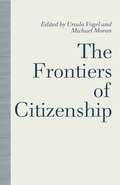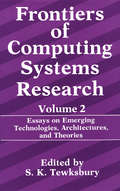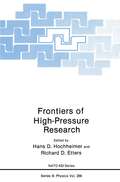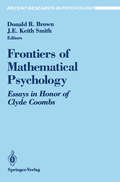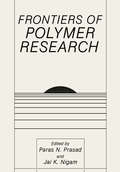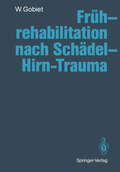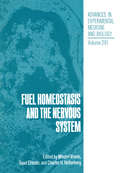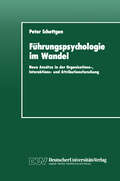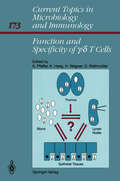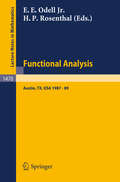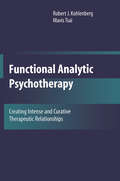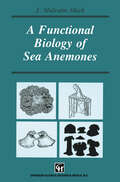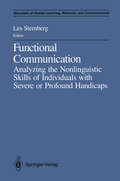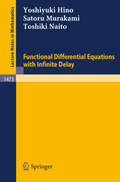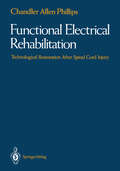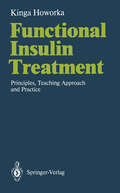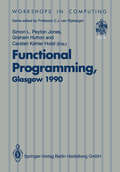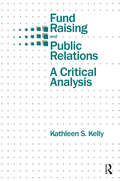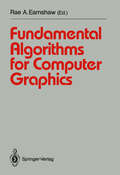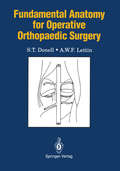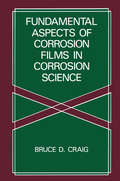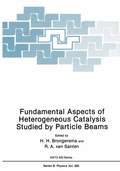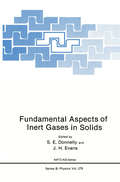- Table View
- List View
The Frontiers of Citizenship
by Michael Moran Ursula VogelWho is entitled to be a citizen? What rights and duties does citizenship involve? These political questions are being asked today with a renewed urgency, both by practising politicians and by scholars. These essays by distinguished contributors examine the changing frontiers of modern citizenship. They look at the way citizenship is being reshaped within the nation state, in relations between women and the state, under the impact of economic crisis and recession, and in the face of new multinational political forces.
Frontiers of Computing Systems Research: Essays on Emerging Technologies, Architectures, and Theories (Frontiers of Computing Systems Research #2)
by Stuart K. TewksburyIntended for an interdisciplinary audience involved in computer systems research, this second volume presents technical information on emerging topics in the field.
Frontiers of High-Pressure Research (Nato Science Series B: #286)
by Hans D. Hochheimer Richard E. EttersThe role of high pressure experiments in the discovery of supercon ducting materials with a T. above liquid nitrogen temperature has demon strated the importance of such experiments. The same role holds true in the tailoring of materials for optoelectronic devices. In addition, much progress has been made recently in the search for metallic hydro gen, and the application of high pressure in polymer research has brought forth interesting results. These facts together with the suc cess of previous small size meetings (such as the "First International Conference on the Physics of Solids at High Pressure", held in 1965 in Tucson, Arizona, U. S. A. ; "High Pressure and Low Temperature Physics", held in 1977 in Cleveland, Ohio, U. S. A. ; and "Physics of Solids Under High Pressure", held in 1981 in bad Honnef, Germany), motivated us to organize a workshop with emphasis on the newest results and trends in these fields of high pressure research. Furthermore, it was intended to mix experienced and young scien tists to realize an idea best expressed in a letter by Prof. Weinstein: "I think it is an excellent idea. I have often felt that the number of excellent young researchers in the high pressure field need an opportu nity to put forward their work with due recognition. " Thanks to the support of the key speakers, we were able to achieve this goal and had more than 50\ young participants.
Frontiers of Mathematical Psychology: Essays in Honor of Clyde Coombs (Recent Research in Psychology)
by J. E.Keith Smith Donald R. BrownThe papers in this volume were prepared after a preliminary symposium held at The University of Michigan in honor of Clyde Coombs. Following the symposium, each paper was extensively revised and in many instances completely rewritten to provide a timely and provocative survey of current works in mathematical psychology in the style of Clyde Coombs. All of the authors were students or colleagues who were closely influenced by Coombs and our intention was not to cover all approaches to the field, but rather to illustrate the continuing influence of Coombs's work and approach to the application of mathematics to basic psychological phenomena. If we are successful, it is because of his influence on the contributors. v Acknowledgements The preparation of this volume in memory of Clyde Coombs owes much to the many friends, students, and colleagues of Clyde Coombs who generously provided their support and encouragement. Funding was provided by Dean John D'Arms of the Horace H.
Frontiers of Polymer Research
by Jai K. Nigam Paras N. PrasadThis book represents the proceedings of the First International Conference on Frontiers of Polymer Research held in New Delhi, India during January 20-25, 1991. Polymers have usually been perceived as substances to be used in insulations, coatings, fabrics, and structural materials. Defying this classical view, polymers are emerging as a new class of materials with potential applications in many new technologies. They also offer challenging opportunities for fundamental research. Recognizing a tremendous growth in world wide interest in polymer research and technology, a truly global "1st International Conference on Frontiers of Polymer Research" was organized by P. N. Prasad (SUNY at Buffalo), F. E. Karasz (University of Massachusetts) and J. K. Nigam (Shriram Institute for Industrial Research, India). The 225 participants represented 25 countries and a wide variety of academic, industrial and government groups. The conference was inaugurated by the Prime Minister of India, Mr. Chandra Shekhar and had a high level media coverage. The focus of the conference was on three frontier areas of polymer research: (i) Polymers for photonics, where nonlinear optical properties of polymers show great promise, (ii) Polymers for electronics, where new conduction mechanisms and photophysics have generated considerable enthusiasm and (iii) High performance polymers as new advanced polymers have exhibited exceptionally high mechanical strength coupled with light weight.
Frühverrentung als politischer Prozeß: Institutionelle Bedingungen, soziale Effekte und finanzielle Verteilungswirkungen — im internationalen Vergleich (DUV Sozialwissenschaft)
by Hubert HeineltFuel Homeostasis and the Nervous System (Advances in Experimental Medicine and Biology #291)
by Mladen Vranic Suad Efendic Charles H. HollenbergThis book has a dual purpose, to review in depth the control of fuel homeostasis in the brain and the role of the nervous system in the control of fuel deposition in the body. From the methodological point of view the emphasis is on the application of advanced technologies to assess fuel transport and brain metabolism, the role of peptides in the neuroendocrine system and the response of the brain to hypoglycemia. These technologies include positron emmission tomography, nuclear magnetic resonance, immunocytochemistry, molecular biology, autoradiography. To study fuel homeostasis in the body advanced tracer methods that include modelling are set out. From the pathophysiological point of view the emphasis is on abnormalities in stress, brain metabolism in diabetes, eating and degenerative disorders. This book contains contributions from endocrinologists, physiologists, neurologists, psychoneuroendocrinOlogists, biophysicists, biochemists and experts in nutrition. This authorship represents a unique diversity of researchers who, for the first time, cover comprehensively the interaction between the nervous system and fuel homeostasis, both in health and disease. We hope this book will be an important source of information for both researchers and practicing clinicians. Mladen Vranic Suad Efendic Charles Hollenberg v ACKNOWLEDGEMENTS The Symposium from which this volume arose (University of Toronto, June 27-28, 1990) was the first Toronto-Stockholm symposium on Perspectives in Diabetes Research. These Symposia are organized triennially by the Banting and Best Diabetes Centre, University of Toronto and the Department of Endocrinology, Karolinska Institute, Stockholm.
Führungspsychologie im Wandel: Neue Ansätze in der Organisations-, Interaktions- und Attributionsforschung
by Peter SchettgenSeit es Wirtschaftsorganisationen gibt, haben die theoretischen wie praktischen Bemühungen um ihre Effizienzsteigerung Konjunktur. Sollen derartige Versuche nicht zu bloßem Versuch-und-Irrtum-Handeln verkommen, setzen sie Wissen oder Erfahrung darüber voraus, welche Eingriffe Erfolg versprechen; die ge staltungsbedürftige Situation wird nach einem bestimmten Bild modelliert. Die Metaphern, die diese Bilder oder Modelle schlaglichtartig zum Ausdruck bringen, haben im historischen Ablauf gewechselt und sind selbst wiederum Indikatoren des vorherrschenden Zeitgeistes. Die Maschinen-Metapher etwa steht für den Glauben an rationale Analysierbarkeit und systematische Pro duzierbarkeit sozialer Systeme, deren Erfolg an quantifizierbaren Output-Daten gemessen wird, während z. B. die Organismus-Metapher eine ganzheitliche, evolutionäre Sicht nahe legt und mit Kriterien wie Reife oder Gesundheit ver bunden ist. Genauso wichtig wie das, was ein Bild nahelegt oder betont, ist das, was es verschweigt. Maschinen- wie Organismus-Modelle machen zum Beispiel ver gessen, daß es bei sozialen Systemen nicht nur um Leistung oder Überleben geht, sondern auch um den Aufbau und die Sicherung von Macht. Dies zeigt sich auch an einer eigenartigen Spaltung der Diskurse: Zum einen wird aus führlich über die gleichsam technischen Aspekte der optimalen Zielerreichung nachgedacht, zum anderen wird das Recht zur Setzung der Ziele und die Ver teilung des Erfolges als politisches oder Wert-Problem der Zuständigkeit ra tionaler Analyse entzogen.
Function and Specificity of γ/δ T Cells: International Workshop, Schloß Elmau, Bavaria, FRG October 14–16, 1990 (Current Topics in Microbiology and Immunology #173)
by Klaus Pfeffer Klaus Heeg Hermann Wagner Gert RiethmüllerOur current understanding of a/~ T cell receptor (TCR) ex pressing T cells advanced from function and specificity to the molecular organization ofthe TCR.We now know that the TCR a and ~ chains together express specificity for (antigenic) peptides presented by the "responder" M H C allele, thus explain ing the phenomenon of MHC restriction at a molecular level. Surprisingly even though our perception of the molecular organization of the y5 TCR is well advanced, current knowledge of function and specificity of the y5 T cell subset is poor. There fore it appeared rather timely to bring together scientists pioneering research on y5 T cells forthe International Workshop on Function and Specificity ofy5 Tcells,held October11-14, 1990 at Schloss Elmau/Bavaria, FRG. Besides offering a scientific forum for open discussions, it was also hoped that such a workshop would be seminal for collaborative interactions and personal relationships among scientists "addicted" to y 15 T cells.
Functional Analysis: Proceedings of the Seminar at the University of Texas at Austin 1987 - 89 (Lecture Notes in Mathematics #1470)
by Edward E. Jr. Odell Haskell P. RosenthalThe papers in this volume yield a variety of powerful tools for penetrating the structure of Banach spaces, including the following topics: the structure of Baire-class one functions with Banach space applications, operator extension problems, the structure of Banach lattices tensor products of operators and Banach spaces, Banach spaces of certain classes of Fourier series, uniformly stable Banach spaces, the hyperplane conjecture for convex bodies, and applications of probability theory to local Banach space structure. With contributions by: R. Haydon, E. Odell, H. Rosenthal: On certain classes of Baire-1 functions with applications to Banach space theory.- K. Ball: Normed spaces with a weak-Gordon-Lewis property.- S.J. Szarek: On the geometry of the Banach-Mazur compactum.- P. Wojtaszczyk: Some remarks about the space of measures with uniformly bounded partial sums and Banach-Mazur distances between some spaces of polynomials.- N. Ghoussoub, W.B. Johnson: Operators which factor through Banach lattices not containing co.- W.B. Johnson, G. Schechtman: Remarks on Talagrand's deviation inequality for Rademacher functions.- M. Zippin: A Global Approach to Certain Operator Extension Problems.- H. Knaust, E. Odell: Weakly null sequences with upper lp-estimates.- H. Rosenthal, S.J. Szarek: On tensor products of operators from Lp to Lq.- T. Schlumprecht: Limited Sets in Injective Tensor Products.- F. Räbiger: Lower and upper 2-estimates for order bounded sequences and Dunford-Pettis operators between certain classes of Banach lattices.- D.H. Leung: Embedding l1 into Tensor Products of Banach Spaces.- P. Hitczenko: A remark on the paper "Martingale inequalities in rearrangement invariant function spaces" by W.B. Johnson, G. Schechtman.- F. Chaatit: Twisted types and uniform stability.
Functional Analytic Psychotherapy: Creating Intense and Curative Therapeutic Relationships (Cbt Distinctive Features Ser.)
by Robert J. Kohlenberg Mavis TsaiNow in paperback, this classic book offers a powerful framework for clinicians seeking to rethink their approach to the therapeutic relationship. It begins with the theory behind Functional Analytic Psychotherapy (FAP), explaining why clients’ unique needs may extend beyond well-mapped routes to change. From there, the authors present the clinical principles of FAP and their uses in treating diffuse, resistant problems.
A Functional Biology of Sea Anemones (Functional Biology Series)
by J. Malcolm ShickGeneral Editor: Peter Calow, Department of Zoology, University of Sheffield, England The main aim of this series will be to illustrate and to explain the way organisms 'make a living' in nature. At the heart of this - their Junctional biology - is the way organisms acquire and then make use of resources in metabolism, movement, growth, reproduction, and so on. These processes will form the fundamental framework of all the books in the series. Each book will concentrate on a particular taxon (species, family, class or even phylum) and will bring together information on the form, physiology, ecology and evolutionary biology of the group. The aim will be not only to describe how organisms work, but also to consider why they have come to work in that way. By concentrating on taxa which are well known, it is hoped that the series will not only illustrate the success of selection, but also show the constraints imposed upon it by the physiological, morphological and developmental limitations of the groups. Another important feature of the series will be its organismic orientation. Each book will emphasize the importance of functional integration in the day-to-day lives and the evolution of organisms. This is crucial since, though it may be true that organisms can be considered as collections of gene determined traits, they nevertheless interact with their environment as integrated wholes and it is in this context that individual traits have been subjected to natural selection and have evolved.
Functional Communication: Analyzing the Nonlinguistic Skills of Individuals with Severe or Profound Handicaps (Disorders of Human Learning, Behavior, and Communication)
by LesSternbergDEVELOPMENT OF NON-LINGUISTIC COMMUNICATION SKILLS, which presents the results of research accomplished through the joint sponsorship of the SonomaDevelopment Center (SDS) and the College of Education of Florida Atlantic University (FAU), examines the development of prelanguage and nonlingu- istic skills in individuals with various types and degrees of developmental disabilities. Utilizing the dichotomies that may exist betweencommunication and language, the book explores communication skills rather than formal language systems acquisition.
Functional Differential Equations with Infinite Delay (Lecture Notes in Mathematics #1473)
by Yoshiyuki Hino Satoru Murakami Toshiki NaitoIn the theory of functional differential equations with infinite delay, there are several ways to choose the space of initial functions (phase space); and diverse (duplicated) theories arise, according to the choice of phase space. To unify the theories, an axiomatic approach has been taken since the 1960's. This book is intended as a guide for the axiomatic approach to the theory of equations with infinite delay and a culmination of the results obtained in this way. It can also be used as a textbook for a graduate course. The prerequisite knowledge is foundations of analysis including linear algebra and functional analysis. It is hoped that the book will prepare students for further study of this area, and that will serve as a ready reference to the researchers in applied analysis and engineering sciences.
Functional Electrical Rehabilitation: Technological Restoration After Spinal Cord Injury
by Chandler A. PhillipsOn one of my returns to California, I attended the "Disabilities Expo 88" at the Los Angeles Convention Center. Among the various marvels oftech nology for the wheelchair disabled were stair-climbing wheelchairs, self raising and lowering kitchen cabinetry, and even a completely accessible "dude ranch" experience. At the same time, as a guest of the Southern California Chapter of the National Spinal Cord Injury Association, I was part of a small booth (among the more than two hundred exhibitors) in which we had spinal cord injured people up and walking with a lower extremity bracing system (the reciprocating gait orthosis) used at the PEERS Spinal Injury Program in Los Angeles. I had a young man, a C6/7 level quadriplegic, walking with electrical muscle stimulation and lower extremity bracing. The system is reviewed in Chapter 8 of this book. As these "disabled" persons walked erect and upright among their wheel chair bound colleagues and took long, confident strides past exhibits extol ling the latest technological virtues of yet another "new" wheelchair (Fig. 1), I reflected on the paradox of it all. What a majority of these paralyzed people W0re really looking for was an alteration oftheir disability so that they could more normally function (in an unaltered environment). What the great majority of the exhibitors were offering was an alteration of the environment so that they could more normally function (with an unaltered disability).
Functional Insulin Treatment: Principles, Teaching Approach and Practice
by Kinga HoworkaFunctional Insulin Treatment (FIT) is the most effective method of treatmentfor type 1 (insulin-dependent) diabetes available today. Whether with an insulin pump or with mul- tiple daily injections, the diabetic patient trained in FIT is able to dose his insulin on the basis of actual fuction so that he achieves near-normoglycemia and the freedom to eat when, what and how much he wants. Previous diabetes eduction programs have adaped the patient's lifestyle to the conditions of therapy. The goal ofFIT is to adapt the therapy to the lifestyle of the pa- tient. Combined withthe opportunity for active and respon- sible patient participation, this flexibility has an enor- mous positive effect on the patient's long-term motivation. This book creates a common basis for communication among therapists (physicians, nurses, dietitians, diabetes educa- tors) and patients involved in FIT. It clearly defines the principles of the treatment and describes the contents, media and techniques of a practical program for training patients to carry it out. The reader is given a clear pictureof just what knowledge and skills the patient needs - and how to help him acquire them - in order to attain the twin goals of excellent metabolic control and flexible life- style.
Functional Programming, Glasgow 1990: Proceedings of the 1990 Glasgow Workshop on Functional Programming 13–15 August 1990, Ullapool, Scotland (Workshops in Computing)
by Simon Peyton Jones Graham Hutton Carsten Kehler HolstFund Raising and Public Relations: A Critical Analysis (Routledge Communication Ser.)
by Kathleen S. KellyThis is the first scholarly work to place the function of fund raising within the field of public relations, redefining it as a specialization responsible for the management of communication between a charitable organization and its donor publics. Combining her academic interest in communication with her experience as a fund raiser, the author has produced one of the few critical studies on fund raising, challenging current perspectives and employing systems theory and the concept of organizational autonomy to lead to a new and different approach. Until now, fund raising has been an anomaly, without an academic home and with few general theories to guide practitioner behavior. This book theoretically grounds fund raising and develops a theory that provides a fuller understanding of one of the fastest growing occupations in the nonprofit sector.
Fund Raising and Public Relations: A Critical Analysis
by Kathleen S. KellyThis is the first scholarly work to place the function of fund raising within the field of public relations, redefining it as a specialization responsible for the management of communication between a charitable organization and its donor publics. Combining her academic interest in communication with her experience as a fund raiser, the author has produced one of the few critical studies on fund raising, challenging current perspectives and employing systems theory and the concept of organizational autonomy to lead to a new and different approach. Until now, fund raising has been an anomaly, without an academic home and with few general theories to guide practitioner behavior. This book theoretically grounds fund raising and develops a theory that provides a fuller understanding of one of the fastest growing occupations in the nonprofit sector.
Fundamental Algorithms for Computer Graphics: NATO Advanced Study Institute directed by J.E. Bresenham, R.A. Earnshaw, M.L.V. Pitteway (Springer Study Edition)
by J. E. Bresenham R. A. Earnshaw M.L.V. PittewayAlgorithms provide the basic foundation for all computational processes. This volume presents algorithms at the foundational level and also at the various levels between this level and the user application. Some of these algorithms are classical and have become well established in the field. This material is therefore a rich source of information and is still relevant and up to date. The basic primitives of computer graphics have remained unchanged: lines, circles, conics, curves and characters. This volume contains reference material in all these areas. The higher levelsof contouring and surface drawing are also well covered. Developments in hardware architectures have continued since the first printing, but the basic principles of hardware/software trade-offs remain valid. This reprint is being published as a Study Edition to make the material more accessible to students and researchers in the field of computer graphics andits applications. The continuing popularity of the original book demonstrates the value and timeliness of its contents.
Fundamental Anatomy for Operative Orthopaedic Surgery (Fundamental Anatomy)
by S.T. Donell A.W.F. LettinStrongly recommended for the surgical trainee this, the second of a number of atlas-texts describing the anatomical basis of a range of common surgicalprocedures, is a useful aide-memoir to operative surgery
Fundamental Aspects of Corrosion Films in Corrosion Science
by B.D. CraigThe purpose of this book is to stimulate thinking among corrosion scientists and engineers to examine corrosion mechanisms and corro sion control from another perspective. While the presence of corro sion films in electrochemical corrosion has been recognized for over a century, the contribution of these films to all facets of corrosion has not been explored to a significant degree. Rather the role of films in certain mechanisms (i.e., stress corrosion cracking) has been empha sized, yet almost ignored for other corrosion mechanisms. This is viewed by the author as solely attributable to the lack of investigation into, and an understanding of, the contribution of films to these mech anisms or forms of attack. The lack of emphasis and study of corrosion films and their contribution to all forms of corrosion attack are probably the result of current university instruction that utilizes two popular corrosion texts (Uhlig and Fontana and Greene) for teaching. These texts provide an excellent understanding at the undergraduate level of corrosion funda mentals; however, the major implicit premise in these texts is that bulk properties of an alloy or metal control the corrosion resistance in a particular environment. For many applications and for a simple under standing of corrosion mechanics, this approach is sufficient. Yet, research on corrosion films indicate these films often have an entirely different composition than the bulk metal (ratio of alloying elements).
Fundamental Aspects of Heterogeneous Catalysis Studied by Particle Beams (Nato Science Series B: #265)
by H. H. Brongersma R. A. Van SantenPresent day heterogeneous catalysis is rapidly being transformed from a technical art into a science-based technology. A major contribution to this important change is the advance of surface spectroscopic techniques able to characterize the complex surfaces of the heterogeneous catalytic system. The Advanced Study Institute (on which the current proceedings is based) has as its primary aim the bringing together of a variety of lecturers, outstanding in those fields of experience, to enable a broad coverage of different relevant approaches. Not only catalyst characterization but also catalytic reactivity had to be covered in order to relate catalyst properties with catalyst performance. Since modern catalysis relates catalytic performance to microscopic molecular catalyst features, theoretical electronic aspects also had to be included. The Advanced Study Institute had a unique feature in that it brought together physicists, catalytic chemists and chemical engineers whom rarely directly interact. From physics especially new experimental possibilities of beams were emphasized. At present it is possible to obtain very detailed information on model catalysts, whilst the applications to practical catalysts are gaining rapidly in sophistication. Apart from the plenary lectures, the Institute included "hot topics" to highlight special developments and offered participants the opportunity to present contributed papers (either orally or as a poster). These contributions formed an integral part of the summer school and significantly enhanced the interaction between participants. Inclusion of the hot topics and contributed papers in these proceedings give them an added topical value.
Fundamental Aspects of Inert Gases in Solids (Nato Science Series B: #279)
by S. E. Donnelly J. H. EvansThe NATO Advanced Research Workshop on Fundamental Aspects of Inert Gases in Solids, held at Bonas, France from 16-22 September 1990, was the fifth in a series of meetings that have been held in this topic area since 1979. The Consultants' Meeting in that year at Harwell on Rare Gas Behaviour in Metals and Ionic Solids was followed in 1982 by the Jiilich Inter national Symposium on Fundamental Aspects of Helium in Metals. Two smaller meetings have followed-a CECAM organised workshop on Helium Bubbles in Metals was held at Orsay, France in 1986 while in February 1989, a Topical Symposium on Noble Gases in Metals was held in Las Vegas as part of the large TMS/AIME Spring Meeting. As is well known, the dominating feature of inert gas atoms in most solids is their high heat of solution, leading in most situations to an essentially zero solubility and gas-atom precipita tion. In organising the workshop, one particular aim was to target the researchers in the field of inert-gas/solid interactions from three different areas--namely metals, tritides and nuclear fuels-in order to encourage and foster the cross-fertilisation of approaches and ideas. In these three material classes, the behaviour of inert gases in metals has probably been most studied, partly from technological considerations-the effects of helium production via (n, a) reac tions during neutron irradiation are of importance, particularly in a fusion reactor environ ment-and partly from a more fundamental viewpoint.
